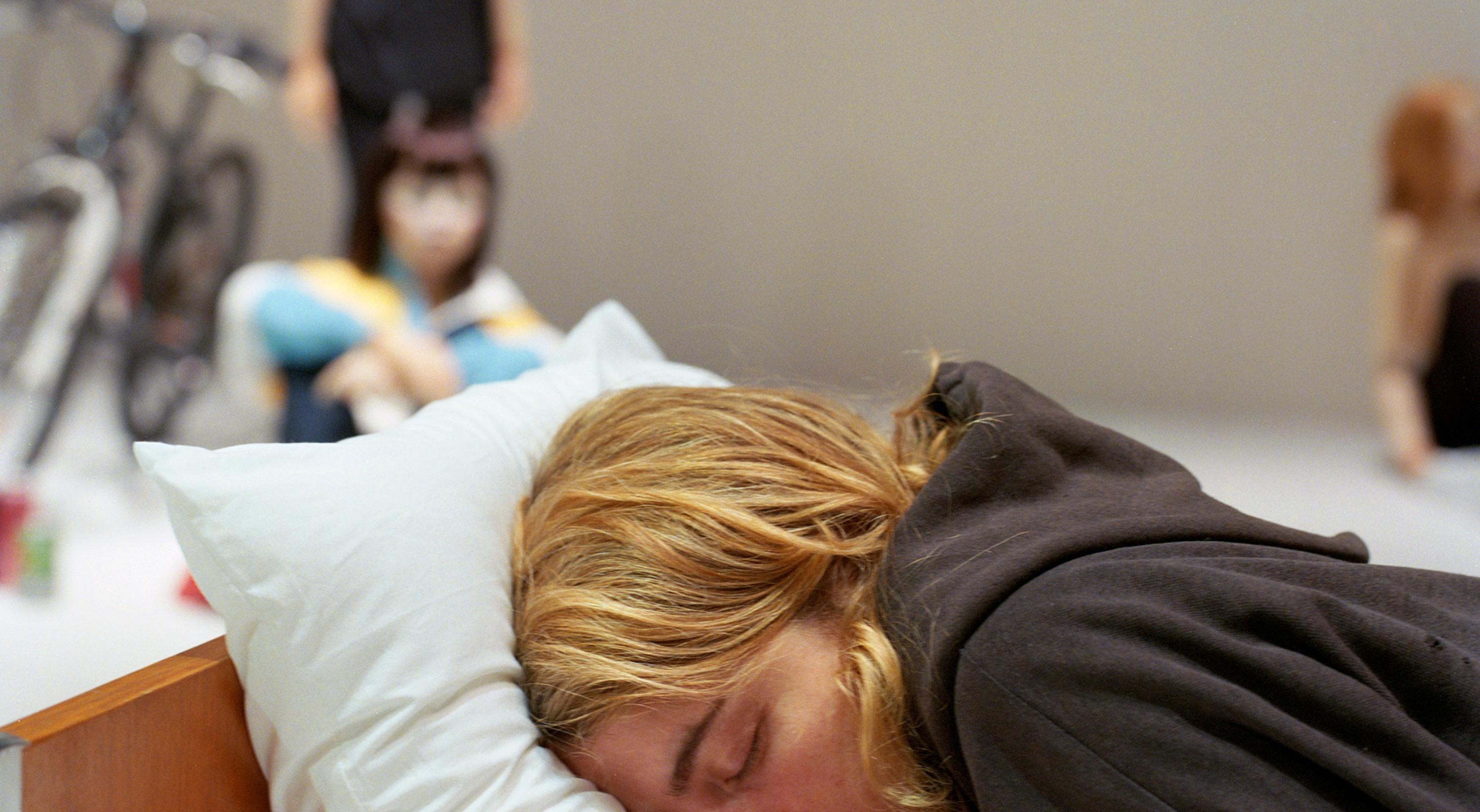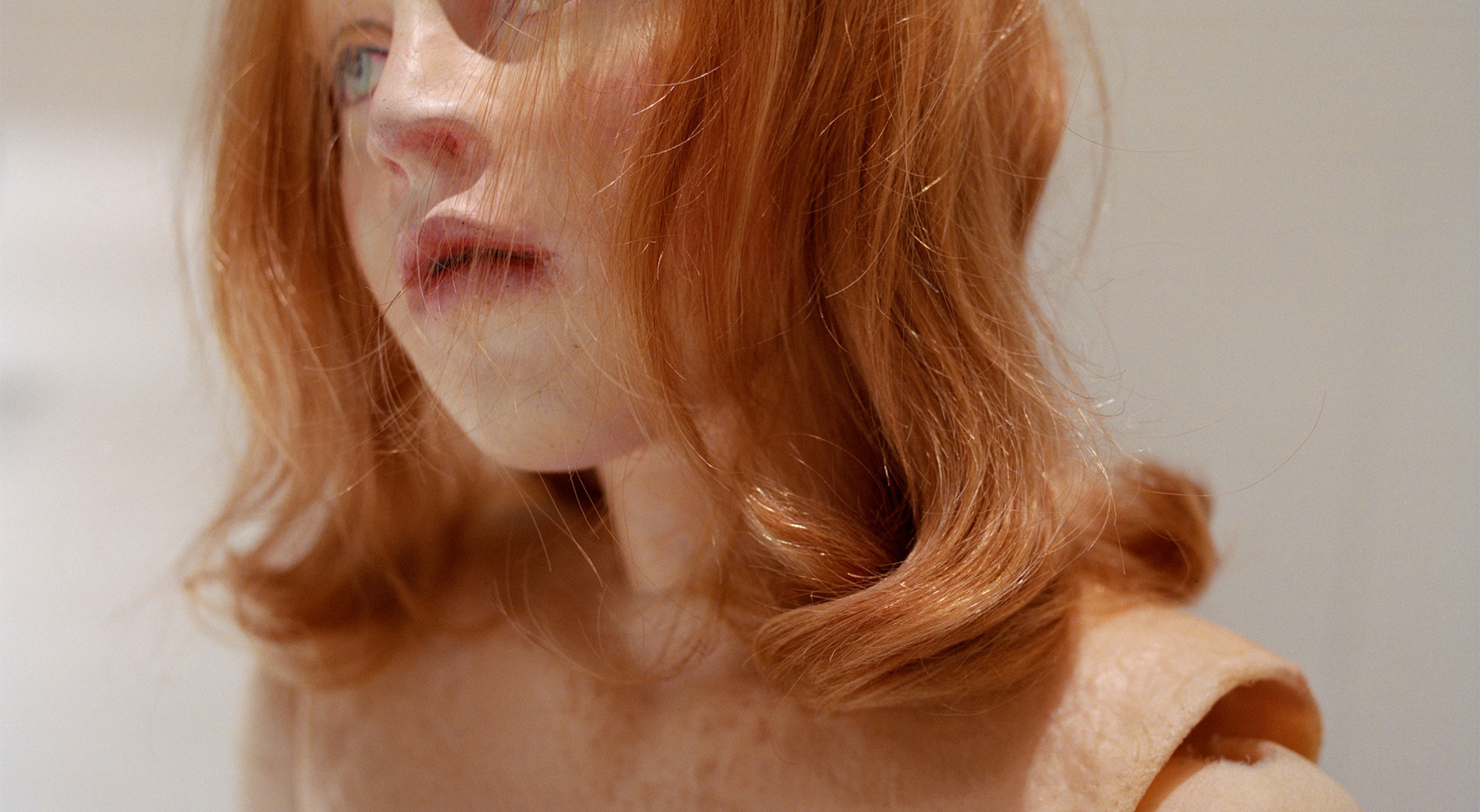Gisèle Vienne
L’Étang by Robert Walser
aprilapr 15 – 24
Concept, direction, and scenography by Gisèle Vienne
Based on the original work Der Teich (The Pond) by Robert Walser
With Adèle Haenel and Ruth Vega Fernandez
Musical direction, Stephen F. O’Malley
Original music, Stephen F. O’Malley, and François J. Bonnet
Lighting, Yves Godin
Dramaturgy, Gisèle Vienne
Decor and accessories, Gisèle Vienne, Camille Queval, and Guillaume Dumont
Costumes, Gisèle Vienne, Camille Queval, and Pauline Jakobiak
Piece created in collaboration with Kerstin Daley-Baradel
Produced by DACM / Compagnie Gisèle Vienne
Coproduced by Nanterre-Amandiers CDN ; Théâtre National de Bretagne ; Maillon, Théâtre de Strasbourg – Scène européenne ; Holland Festival ; Fonds Transfabrik – Fonds franco-allemand pour le spectacle vivant ; Ruhrtriennale ; Münchner Kammerspiele ; Comédie de Genève ; Le Manège – Scène nationale de Reims ; Centre Culturel André Malraux (Vandoeuvre-lès-Nancy) ; MC2 : Grenoble ; Tandem Scène nationale ; Kaserne Basel ; La Filature – Scène nationale de Mulhouse ; Festival d’Automne à Paris ; Théâtre Garonne ; CCN2 – Centre Chorégraphique national de Grenoble ; International Summer Festival Kampnagel Hamburg ; BIT Teatergarasjen, Bergen
With the support from La Colline – théâtre national and CN D Centre national de la danse
Thanks to Point Ephémère pour la mise à disposition d’espace et au Playroom, SMEM, Fribourg pour la mise à disposition de studio son
L'Etang was created in residence at the Théâtre National de Bretagne in November 2020
In association with Nanterre-Amandiers, centre dramatique national ; and Festival d’Automne à Paris
An adaptation of a short piece of writing by the Swiss writer Robert Walser, l’Étang throws light upon the intricate workings of a filial love story. The various roles are played by two actresses Adèle Haenel and Ruth Vega Fernandez.
L’Étang is a family drama which differs from the rest of the work of Robert Walser (1878-1956) in that it is a private text that he gave to his sister, and is the only work her wrote in Swiss-German. It recounts the story of a child who feels unloved by his mother and, at the height of her despair, fakes her own suicide in order to find out if her mother really loves her. What are the issues that are at stake here? What are the forces at work between the words on the page and the onstage action? What are the different strata of language, ranging from elements of narration to the spoken word, and which we may or may not be able to formulate, which comprise our perception, comprehension and exchanges? These questions, present at the core of Gisèle Vienne’s work for some time now, are tackled via the mise en abyme of the writing of Robert Walser and its staging: Adèle Haenel and Ruth Vega Fernandez play, one and two roles respectively, whist lending their voices to the other characters, represented by dolls. On the stage, the eight scenes and seventeen bodies are permanently on display. Thus, several levels of perception of reality and temporality, interiority and exteriority are brought into existence. Raising questions about theatre and family-based convention, L’Étang looks, in particular, into the question, the essential aspect of which is deceiving, of what we see – that is, the shared representation of reality and, social norm.
This piece has been created in memory of Gisèle Vienne’s long-term collaborator, the actress Kerstin Daley Baradel, who passed away in 2019, and with whom the director and her team developed this work side by side.

